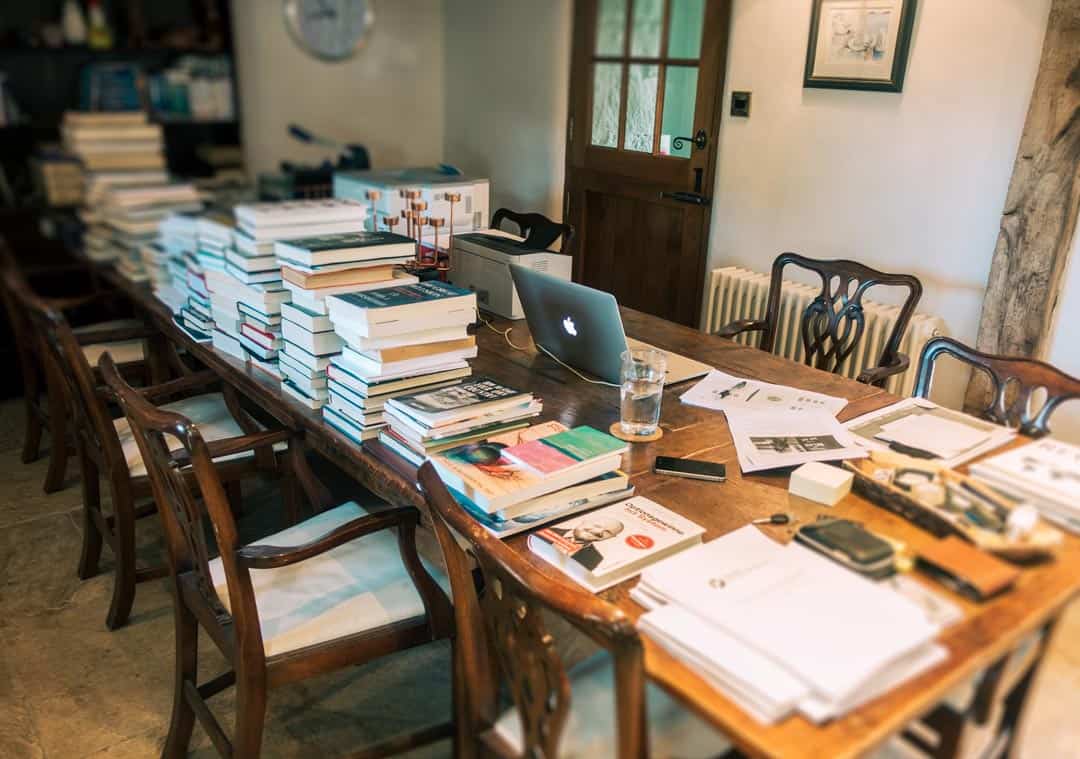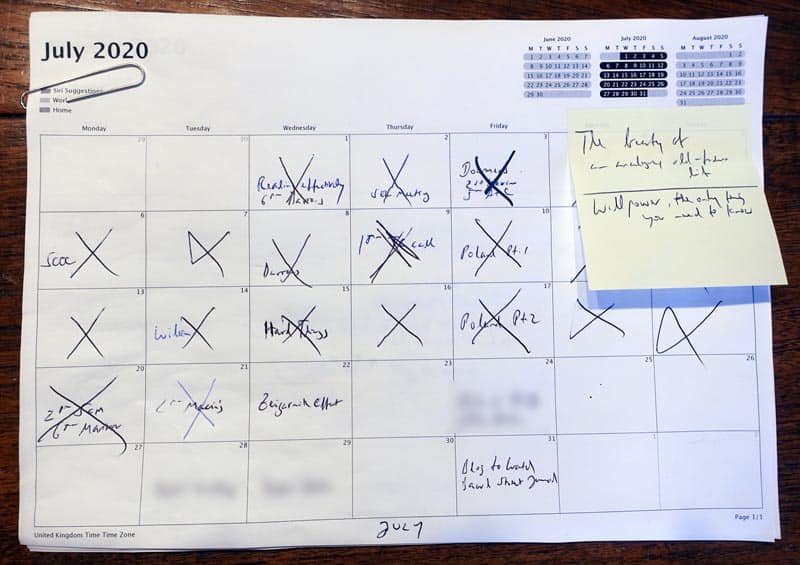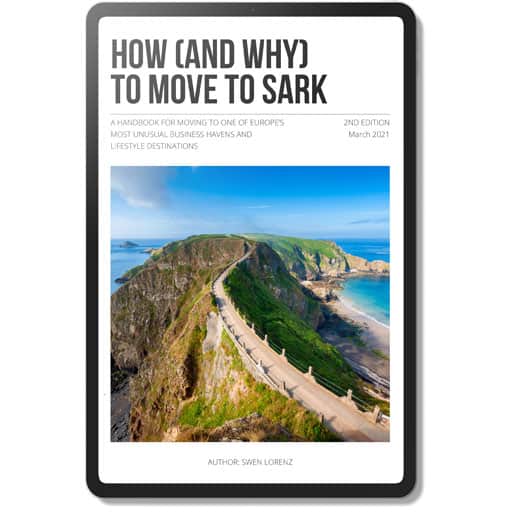A few weeks ago, a reader of my investment website emailed me a question.
He had seen a photo that I had published of my kitchen table, which doubles up as my office.
On the table, I had piles and piles of books. As I told my readers in an article about how I work, each pile represented a separate research project.
My reader asked: “How can you possibly have so many different research projects sit right in front of you without completely losing your ability to focus on a task?“
His question got me thinking. Well, how can I? I had never even thought about it.
After some deliberation and research, I found the answer. It’s one that you, too, can benefit from.
I’ll show you a method that is simple but powerful and scientifically proven.
Is one of your goals to strengthen your willpower and increase your productivity?
If so, then this discovery by a 19th-century female Russian scientist may be of use to you.

My kitchen desk on Sark is my office, and each book pile represents one upcoming article or research report. I hunted down an unusually big (3.50m x 1.20m / 11.5 ft x 3.6 ft) antique dining table to have sufficient workspace – meaning I’ve got an insane number of pending projects sitting right in front of me all day, every day.
Who’d have heard of the Zeigarnik effect?
Bluma Zeigarnik was a Lithuanian-born Russian psychologist and psychiatrist who studied human memory during the 1920s.
During a restaurant visit in Vienna, Zeigarnik noticed that the waiter had perfect recollection of a guest’s order for as long as the bill hadn’t been settled – but that it vanished off the waiter’s memory as soon as the bill was paid! The waiter didn’t just forget the order, but also stopped recognising that person as a guest. How was that possible?
Zeigarnik’s subsequent research established an important finding about the human brain.
Our brain automatically dedicates energy to tasks that are “pending”. If something needs to be done, our mind actively and subconsciously keeps it on hold. Equally, once the issue has been dealt with, the brain may drop it without a trace.
This discovery became known as the Zeigarnik effect.
The upside of it is that pending matters stay on your mind. The downside is that you can feel bogged down, confused, and unable to focus if you have too many pending tasks. Having something on your mind drains your brain’s energy. It makes intrusive, preoccupying thoughts come into your mind. Your brain will forever nag you about it. As the old saying goes, it will stay in the back of your head.
In today’s day and age of perpetual busyness, just about everyone has a bazillion pending things. Who doesn’t know the feeling of not knowing where to start because there is too much going on? You feel distracted and unable to focus because there is just so much to think of. Right?
The good news is, you can outwit your brain with a straightforward method. It is so simple that you could start applying it straight away.

Bluma Zeigarnik – the lady we have to thank for today’s article.
Help your brain to work in the most efficient way
Another finding of Bluma Zeigarnik was that planning makes your brain shift items off its list of pending items. Creating a specific plan saves your brain from having to dedicate energy to an item. It helps your brain get closure, even though the task hasn’t been dealt with. Just having a plan is enough.
Without even having heard of the Zeigarnik effect, I had already found a way to prevent the different book piles on my kitchen desk from sucking in any of my mental energy.
I keep a paper diary that provides one A4-page of space for each month. It’s one with a box for each day – see the screenshot of my actual July 2020 sheet below.
All my research projects or major pending tasks have their own spot in this diary, including a note on when I will deal with them.
Over time, I have come to do this on a rolling basis for the next three months. It’s an arbitrary period, but three months of planning simply works for me. It’s about as far down the future as I have sufficient visibility to do any meaningful planning.
These sheets then sit right next to me. By keeping them in plain sight (the current one on top), I add to my feeling that everything is under control and on track.
And here is the magic, confirmed by Bluma Zeigarnik’s research.
As soon as you make a plan to deal with something at a specific point in the future, it’s taken off your mind. Having a specific plan makes your brain let go of it.
From that moment, a pending item stops taking up mental energy.
You put your brain to rest because your mind knows that the pending task is in safe hands and will be remembered (and dealt with) at the right time. Your grey mass needs to know that it doesn’t need to worry about it anymore. No more mental energy is required.
Not having a plan at all drains your brainpower and drags down your productivity. It puts you into a state of anxiety and stress, which no one finds helpful.
There are a couple of further details to it. For example, purely out of habit, I look through my diary pretty much every day. Sometimes twice or three times a day, and sometimes I skip a day. Once I have done my quick check, my mind lets go of the matter. Everything is on track and under control – nothing will fall through the cracks.
As soon as you make a plan to deal with something at a specific point in the future, it’s taken off your mind. Having a specific plan makes your brain let go of it.
As a result, I don’t even see all the stuff that sits on my kitchen table. I don’t notice these piles of books and papers. It’s as if they didn’t exist, and they certainly don’t suck in any of my energy or occupy any of my mind space.
The regular checking of my planning means I can rejig and fine-tune as needed. Sometimes, I kick off an item or move its timing. It’s a living diary that I scribble notes into, as you can see below. At any and all times, I very much enjoy the fact (and revel in it) that I’ve got an up-to-date plan for what I need to do.
I do cheat a little. If I’m not sure about where to fit something in or what it consists of, then I scribble a few notes onto a Post-it note. I stick that to the diary, and it serves as the quasi ante hall of the diary. A bit further down the road, it’s either converted to a diary entry, or it goes into the bin.
The crucial thing is to have a *specific* plan. Only then does your brain shed the item off the list of things that it needs to dedicate energy to.
Distraction, confusion or a feeling of being overwhelmed?
Not for me, despite all the undone tasks piling up around me.
This simple method allows me to focus all my mental energy on the big task at hand.
It’s focus, focus and yet more focus in my daily life, thanks to three sheets of paper.

My current monthly sheet.
As simple and cheap a system as they come
The ability to focus is one of the most important skills you can develop. It affects everything else.
My very own method costs pennies and very little time, but it frees up tremendous mental energy and allows you to preserve that precious mental focus. It helps you to PLOUGH through the item(s) that you have to work on the most urgently.
Each day, I tend to have two or three things that I focus on getting done (scheduling one massive task for the morning hours when I have lots of energy, and adding smaller ones to the afternoon or evening). In any case, I never have 10, 20 or 50 undone things take up brain space. The only space they take up is the small boxes on my paper diary print-outs.
At the end of each day, I get a massive kick out of crossing out that day’s box. It gives me a dopamine hit to know that I have stuck to my plan and advanced my life.
All that can be achieved with just a few sheets of A4 paper and a pen. As I said before on multiple occasions, I believe in *simple* systems, because anything that’s not simple usually doesn’t work.
And before you ask, putting it down in digital form never worked for me. I need the tangibility of paper. I enjoy the ability to occasionally take these magic sheets to the sofa in front of the fireplace or my chair in the garden to dedicate five, ten or fifteen minutes of quiet contemplation to it.
Plus, there is a final fun part to it that you can only do with paper!
When the month is over, I can physically see the crossed-out achievements right in front of me. It’s a deeply satisfying feeling to think back and realise just HOW MUCH you’ve got done over the last 30 days.
After that, I symbolically and joyfully crumple it into a ball and throw it across the kitchen. Sometimes, I manage to hit the bin. Most of the time, I have to get up and give it a second toss.
Bluma Zeigarnik is probably watching me from heaven doing it.
If you enjoyed this article, then you will probably also like:

Looking for clever ways to invest your hard-earned cash?
Head over to my investment website Undervalued-Shares.com for common sense investment opportunities from around the world. Ideas that you won’t find anywhere else!
Want to print this article? Open a printer friendly version.
Did you find this article useful and enjoyable? If you want to read my next articles right when they come out, please sign up to my email list.
Share this post:


